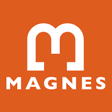Etrog Containers
The etrog (Heb. אתרוג, citrus fruit) is one of the “Four Species” used during the rituals relating to the Festival of Sukkot (or Tabernacles).
Following rabbinic interpretations (based on the Mishnah and the Talmud, Sukkah), the “Four Species” (a date palm frond, myrtle and willow branches, and an etrog) are typically acquired during the days between Yom Kippur and Sukkot, and, when not locally grown, are often ordered months in advance.
Citrus fruits used on Sukkot are particularly rare items, found in limited quantities on the banks of the Mediterranean, and need to be especially grown, selected, ordered, and exported in time for the beginning of the Festival. At the end of the festival, the fruits are used in culinary recipes, or for their aromatic scent, according to customs that vary throughout the Jewish Diaspora.
Containers have been created throughout the Jewish Diaspora to house one’s etrogfor the eight days of the duration of the Festival, so that the fruit can be kept safe when not in use, and thus remain unblemished and usable for ritual purposes. Their shape and materials vary greatly. On occasion, the containers bear inscriptions (generally in Hebrew), including the word,etrog, and the phrase, peri etz hadar (Heb. פרי עץ הדר, “fruit of a beautiful tree,”) derived from Leviticus 23:40.
Made for individual users, but used publicly during synagogue services, these objects lay at the intersection between the spheres of personal ritual and synagogue life. The materials, shapes, and the overarching aesthetics presiding the making of etrogcontainers are indicative of the social and cultural characteristics of their makers, of the patrons who commission them, and the communities they belong to. Often, their shape recalls a coffer, or a treasure chest, signaling the preciousness of the item they contain.
The museum holdings of The Magnes Collection of Jewish Art and Life include significant examples of etrog containers from Europe, Israel and the United States, dating from the 19th to the 20th century.
Search the Magnes Collection Database online
AccessCollection is being processed and is not currently accessible
External LinksKeep Up-To-Date
